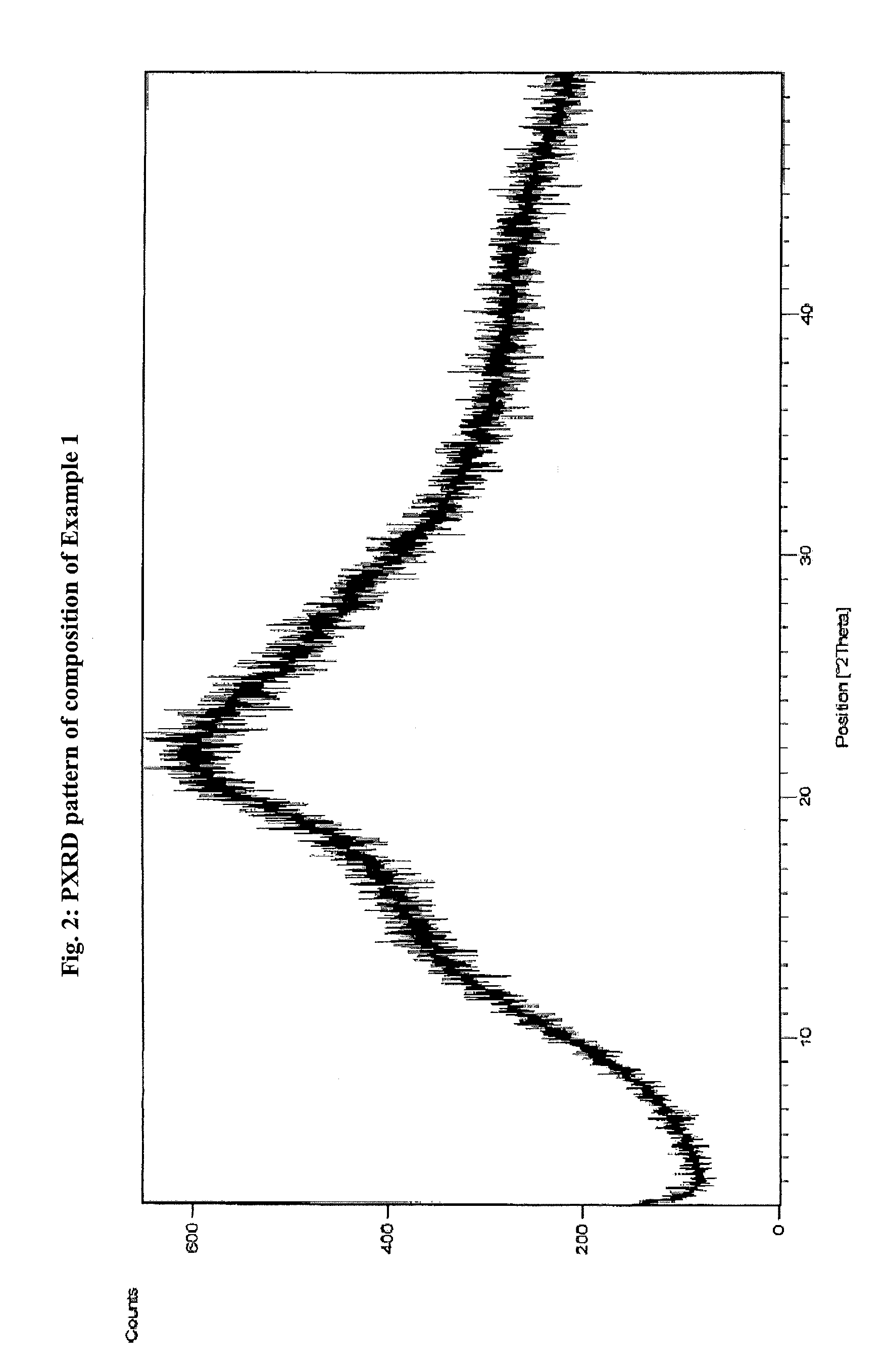Pharmaceutical composition
a technology of pharmaceutical composition and composition, applied in the field of oral pharmaceutical composition, can solve the problems of incomplete bioavailability, debilitating illness and premature death, and inability to meet the needs of patients, and achieve the effect of good aqueous solubility and enhanced bioavailability
- Summary
- Abstract
- Description
- Claims
- Application Information
AI Technical Summary
Benefits of technology
Problems solved by technology
Method used
Image
Examples
example 1
[0102]1.0 gm Atovaquone was dissolved in 40 mL Methylene di chloride at 30±2° C. In another flask 5.0 gm Plasdone S-630 was dissolved in 50 mL Methylene di chloride at 30±2° C. to get a clear solution. Both the solutions were filtered and mixed together; the solvent from the mixture was removed by distillation till a residue was obtained. The residue was dried in oven at 55-60° C. under vacuum. The phase homogeneity of the product so obtained was found to be 100% as characterized by PXRD and electron diffraction during transmission electron microscopy.
example 2
[0103]1.0 gm atovaquone was dissolved in 5 mL Tetra hydro furan at 30±2° C. to get clear solution. In another flask 5.0 gm Plasdone S-630 was dissolved in 20 mL Tetra hydro furan at 30±2° C. to get a clear solution. Both the solutions were filtered and mixed; the solvent from the mixed solution was removed by distillation till a residue was obtained. The residue was dried in oven at 55-60° C. under vacuum. The phase homogeneity of the product so obtained was found to be 100% as characterized by PXRD and electron diffraction during transmission electron microscopy.
example 3
[0104]1.0 gm Atovaquone was dissolved in 40 mL Methylene di chloride at 30±2° C. In another flask 5.0 gm Plasdone S-630 was dissolved in 50 mL Methylene di chloride at 30±2° C. to get a clear solution. Both the solutions were filtered and mixed together, the solvent from the mixture was removed by distillation till a residue was obtained. To the residue was added 50 mL Hexane, stirred and filtered to get the solid. It was dried in oven at 55-60° C. under vacuum. The phase homogeneity of the product so obtained was found to be 71.1% as characterized by PXRD.
PUM
| Property | Measurement | Unit |
|---|---|---|
| size | aaaaa | aaaaa |
| pH | aaaaa | aaaaa |
| aqueous soluble | aaaaa | aaaaa |
Abstract
Description
Claims
Application Information
 Login to View More
Login to View More - R&D
- Intellectual Property
- Life Sciences
- Materials
- Tech Scout
- Unparalleled Data Quality
- Higher Quality Content
- 60% Fewer Hallucinations
Browse by: Latest US Patents, China's latest patents, Technical Efficacy Thesaurus, Application Domain, Technology Topic, Popular Technical Reports.
© 2025 PatSnap. All rights reserved.Legal|Privacy policy|Modern Slavery Act Transparency Statement|Sitemap|About US| Contact US: help@patsnap.com



